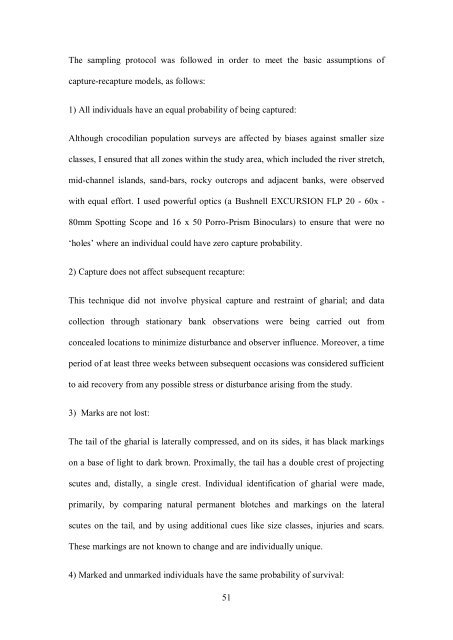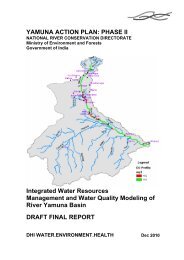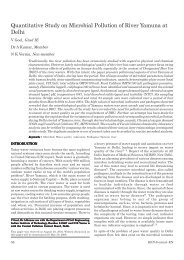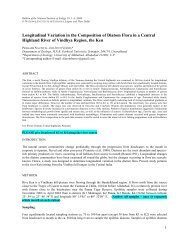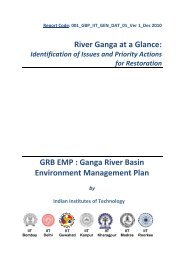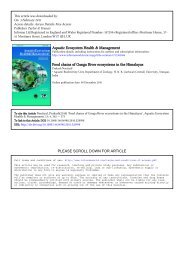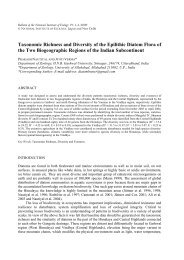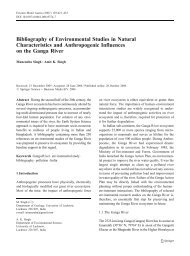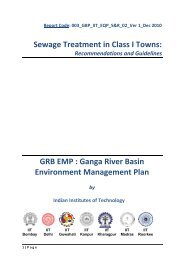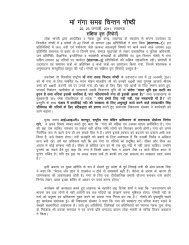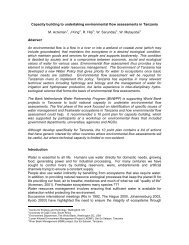Ecological and anthropogenic covariates ... - GANGAPEDIA
Ecological and anthropogenic covariates ... - GANGAPEDIA
Ecological and anthropogenic covariates ... - GANGAPEDIA
Create successful ePaper yourself
Turn your PDF publications into a flip-book with our unique Google optimized e-Paper software.
The sampling protocol was followed in order to meet the basic assumptions of<br />
capture-recapture models, as follows:<br />
1) All individuals have an equal probability of being captured:<br />
Although crocodilian population surveys are affected by biases against smaller size<br />
classes, I ensured that all zones within the study area, which included the river stretch,<br />
mid-channel isl<strong>and</strong>s, s<strong>and</strong>-bars, rocky outcrops <strong>and</strong> adjacent banks, were observed<br />
with equal effort. I used powerful optics (a Bushnell EXCURSION FLP 20 - 60x -<br />
80mm Spotting Scope <strong>and</strong> 16 x 50 Porro-Prism Binoculars) to ensure that were no<br />
‘holes’ where an individual could have zero capture probability.<br />
2) Capture does not affect subsequent recapture:<br />
This technique did not involve physical capture <strong>and</strong> restraint of gharial; <strong>and</strong> data<br />
collection through stationary bank observations were being carried out from<br />
concealed locations to minimize disturbance <strong>and</strong> observer influence. Moreover, a time<br />
period of at least three weeks between subsequent occasions was considered sufficient<br />
to aid recovery from any possible stress or disturbance arising from the study.<br />
3) Marks are not lost:<br />
The tail of the gharial is laterally compressed, <strong>and</strong> on its sides, it has black markings<br />
on a base of light to dark brown. Proximally, the tail has a double crest of projecting<br />
scutes <strong>and</strong>, distally, a single crest. Individual identification of gharial were made,<br />
primarily, by comparing natural permanent blotches <strong>and</strong> markings on the lateral<br />
scutes on the tail, <strong>and</strong> by using additional cues like size classes, injuries <strong>and</strong> scars.<br />
These markings are not known to change <strong>and</strong> are individually unique.<br />
4) Marked <strong>and</strong> unmarked individuals have the same probability of survival:<br />
51


